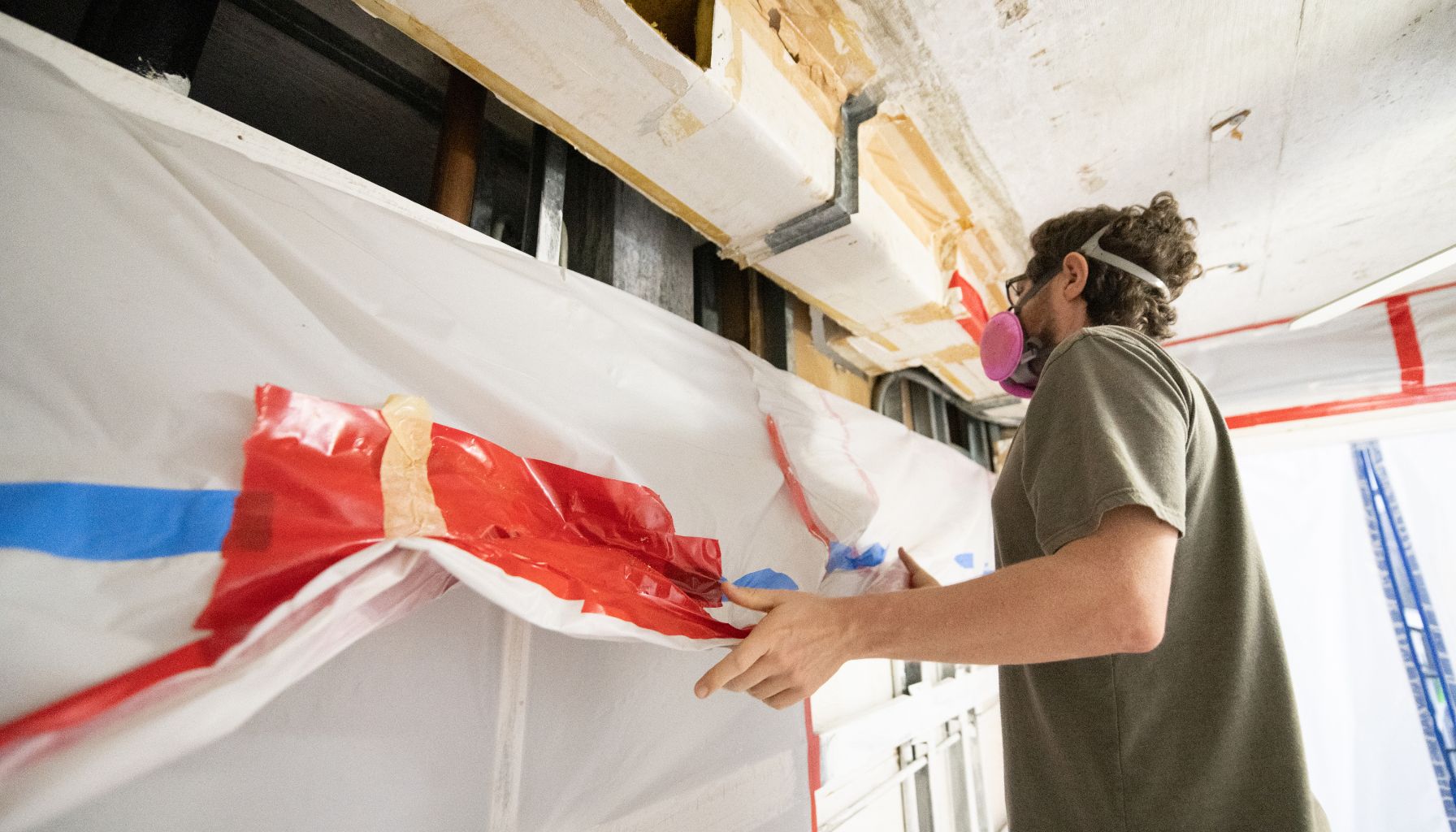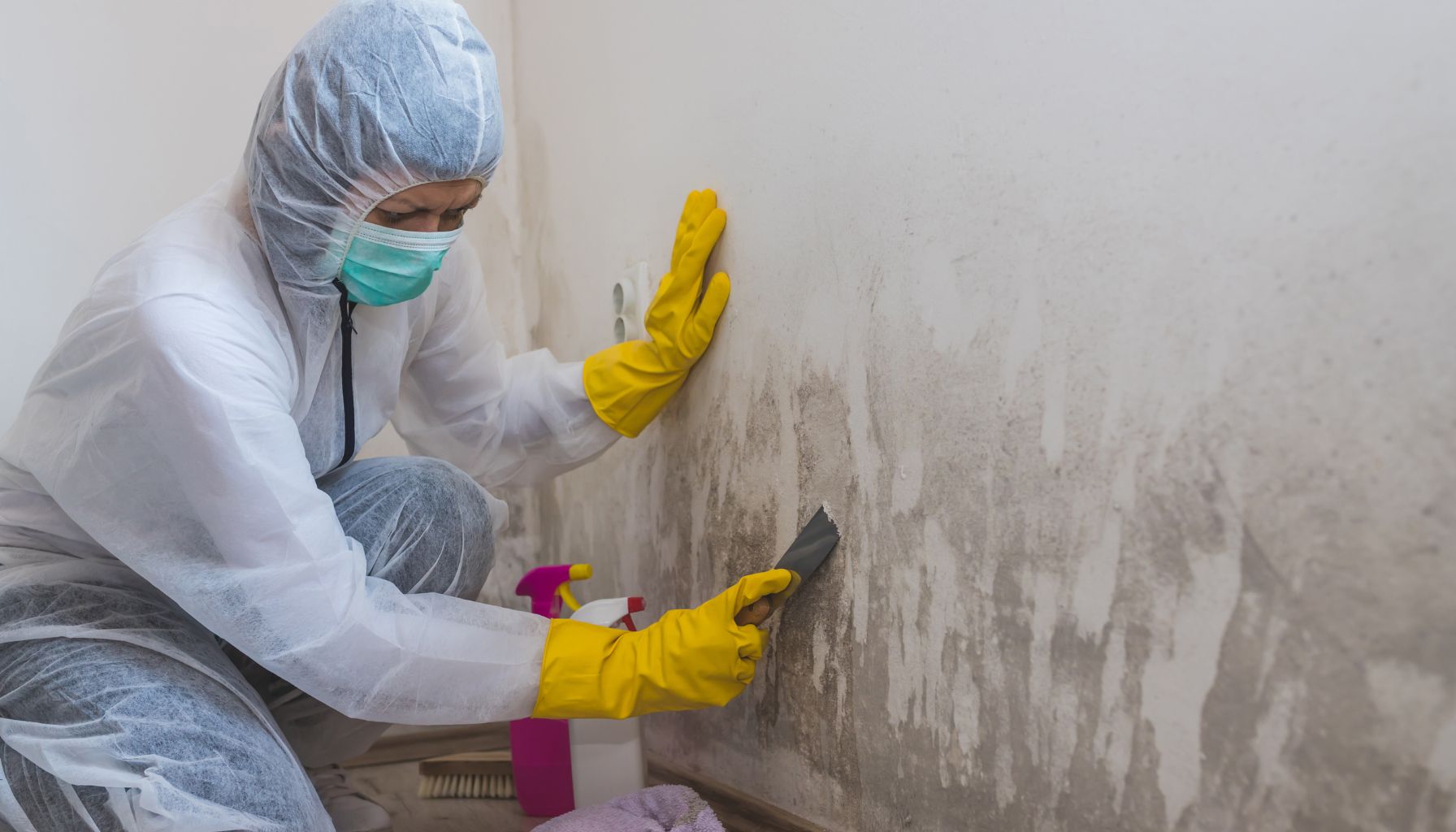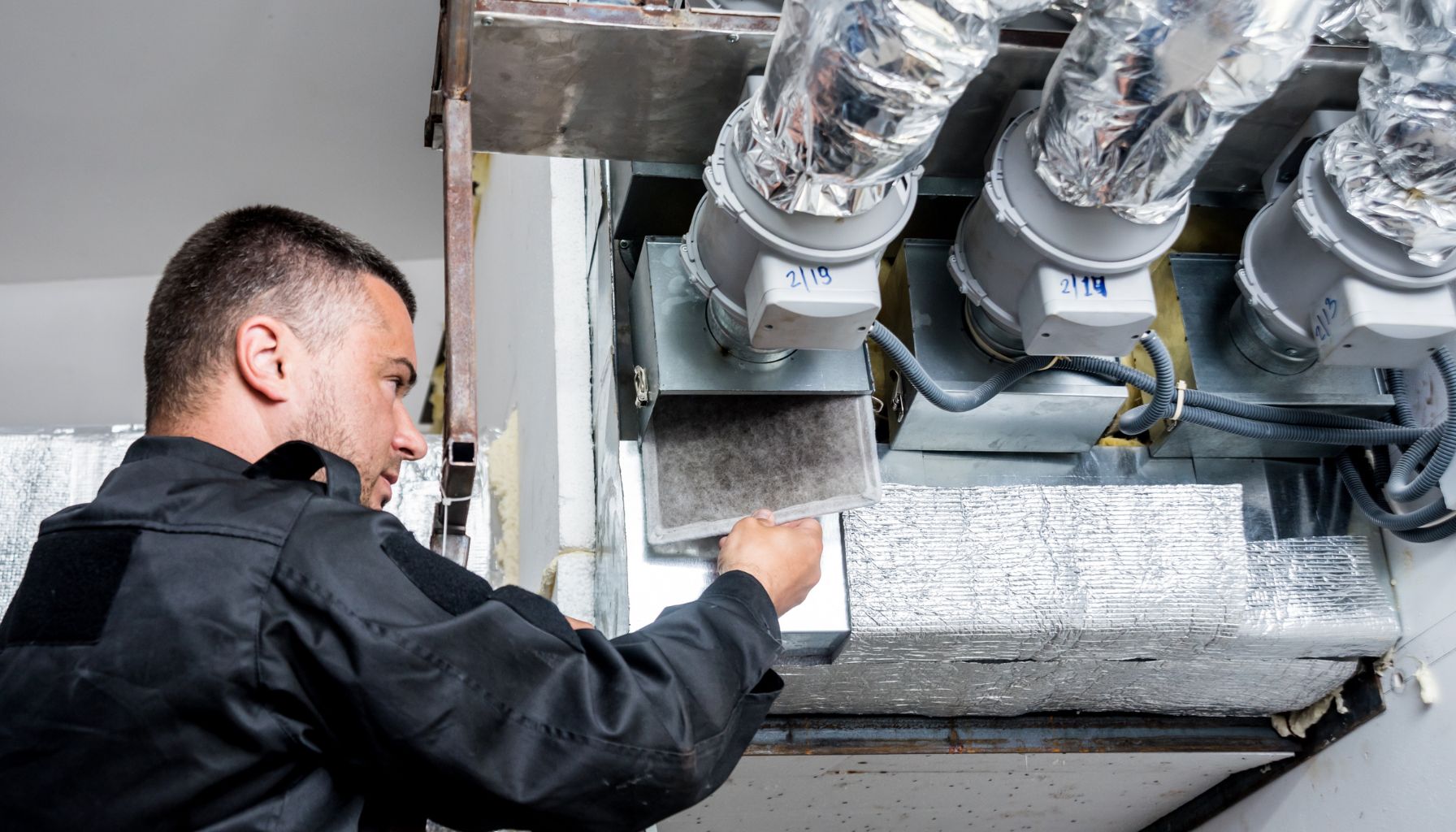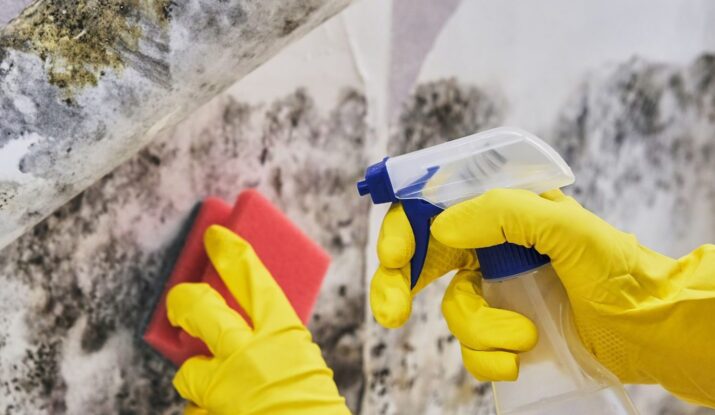Are you a property owner or manager faced with the daunting task of mold damage restoration in your commercial property? Mold can pose serious health risks and cause significant damage to the structure and contents of a building. In this article, we will explore the best practices for effective mold damage restoration in commercial properties. From identifying and isolating the affected areas to implementing safe and thorough remediation strategies, we will provide you with the essential information and steps to successfully restore your property and ensure the health and safety of your occupants.

Understanding the Basics of Mold and Its Causes
What is Mold and How It Forms
Mold is a type of fungus that grows in damp and humid environments. It thrives in areas with high moisture levels, such as bathrooms, kitchens, basements, and areas affected by water leaks or flooding. Mold reproduces through spores which are spread through the air and can easily land on surfaces and grow. It can appear as black, brown, green, or white patches on walls, ceilings, floors, and other surfaces.
Common Causes of Mold in Commercial Buildings
There are several common causes of mold growth in commercial buildings. Poor ventilation and inadequate airflow can trap moisture and contribute to mold formation. Leaks from roofs, windows, or pipes can introduce water into the building, creating an environment conducive to mold growth. High humidity levels, especially in areas like bathrooms and kitchens, can also lead to mold infestation. Additionally, flooding incidents or water damage left unaddressed can result in mold growth if not properly mitigated.
Health Risks Associated with Mold
Mold can have negative health effects on individuals exposed to it for prolonged periods. It can cause allergic reactions, respiratory problems, and aggravate existing conditions such as asthma or allergies. Some people may experience symptoms like coughing, sneezing, skin irritation, eye irritation, and even more severe reactions. It is crucial to address mold issues promptly to prevent potential health risks for occupants in commercial buildings.

Identifying the Presence of Mold in Commercial Properties
Signs of Mold in Commercial Buildings
To identify the presence of mold in commercial buildings, there are several signs to look out for. These include the visible presence of mold growth on walls, ceilings, or other surfaces, especially in areas prone to moisture. Musty odors and a damp, stuffy feeling in the air can also indicate mold infestation. Additionally, frequent allergic reactions or respiratory issues experienced by occupants can be a sign of mold presence.
Importance of Regular Inspections for Mold
Regular inspections for mold are essential in commercial properties to detect mold growth early and prevent it from spreading extensively. Professional inspectors can identify hidden mold behind walls or in ventilation systems. They can also assess areas that are prone to moisture, such as basements or areas with plumbing fixtures, pipes, or HVAC systems. Regular inspections can help detect mold issues before they cause significant damage or health problems.
Professional Mold Testing
In cases where mold growth is suspected but not readily visible, professional mold testing may be necessary. Mold testing involves taking samples of the air or physical surfaces to determine the presence and type of mold species. This testing helps identify the extent of the mold problem and guides appropriate remediation efforts. Professional mold testing can provide valuable insights into the severity of the mold issue and help determine the most effective restoration approach.
Immediate Steps to Take Upon discovering Mold
Ensuring Safety during Initial Mold Discovery
Upon discovering mold in a commercial property, your safety should be the top priority. It is crucial to wear appropriate personal protective equipment (PPE) such as gloves, goggles, and a respirator mask to avoid direct contact with mold spores. Opening windows or using fans to improve ventilation can help minimize exposure to airborne mold particles. It is also advisable to keep children, pets, or individuals with respiratory conditions away from the affected areas until professional assistance arrives.
Limiting Spread by Containing Mold-Infected Area
To prevent further spread of mold, it is important to contain the affected area. This can be done by sealing off the affected space using plastic sheeting and duct tape. By isolating the mold-infected area, you can minimize the chances of mold spores spreading to other parts of the building. It is crucial to avoid disturbing or attempting to clean the mold before professional mold restoration experts arrive.
Contacting a Professional Mold Restoration Company
Upon discovering mold in a commercial property, it is advisable to contact a professional mold restoration company as soon as possible. Mold restoration experts have the necessary knowledge, experience, and equipment to safely and effectively mitigate mold issues. They can assess the extent of the mold damage, develop a customized restoration plan, and thoroughly remove the mold while minimizing the risk of cross-contamination. Promptly contacting a professional mold restoration company ensures that the situation is handled efficiently and reduces the potential for further damage to the building and occupants’ health.
Comprehensive Assessment and Planning
Professional Mold Damage Assessment
A professional mold damage assessment is a crucial step in the mold restoration process. Mold restoration specialists will inspect the affected areas, identify the extent of the mold growth, and assess any damage caused by the mold. This assessment helps determine the appropriate restoration techniques and the scope of work required to fully remediate the mold issue. By conducting a thorough assessment, specialists can develop an effective plan to restore the commercial property to a mold-free and safe environment.
Creating a Mold Damage Restoration Plan
Based on the findings from the mold damage assessment, a comprehensive mold damage restoration plan can be created. This plan outlines the necessary steps, timelines, and resources required to successfully mitigate the mold infestation. It includes containment strategies, mold removal techniques, and measures to restore any damage caused by the mold. A well-defined restoration plan ensures that all areas affected by mold growth are addressed and that the restoration process is carried out efficiently.
Understanding the Role of Insurance in Mold Damage Restoration
Insurance coverage for mold damage restoration can vary depending on the policy and specific circumstances. It is important to understand the coverage provided by your insurance policy and to notify your insurance company promptly about the mold issue. Some policies may provide coverage for mold-related damages resulting from perils such as water leaks, while others may have specific exclusions. Consulting with your insurance provider and involving them in the restoration process can help navigate any insurance-related matters and potentially minimize out-of-pocket expenses.
Complete Mold Removal Process
Mold Containment and Isolation
Before proceeding with mold removal, it is crucial to properly contain and isolate the affected areas. Mold containment involves creating a physical barrier using plastic sheeting and negative air pressure systems to prevent mold spores from spreading to other parts of the building. Isolating the mold-infected area helps minimize the risk of cross-contamination and ensures that the removal process is conducted safely and effectively.
Air Filtration to Remove Mold Spores
Effective air filtration is an essential step in the mold removal process. High-efficiency particulate air (HEPA) filters are commonly used to filter and remove mold spores from the air. These filters can capture tiny airborne particles, including mold spores, preventing them from circulating and settling on surfaces. By using proper air filtration systems, the concentration of mold spores in the air can be reduced, improving indoor air quality and minimizing the risk of respiratory problems for occupants.
Physical Mold Removal from Surfaces
Physical mold removal involves the elimination of visible mold growth from surfaces. Mold restoration specialists use appropriate techniques and tools to safely remove mold from walls, ceilings, floors, and other affected areas. Depending on the extent of the mold growth, the removal process may involve scrubbing, sanding, or even the removal and replacement of severely damaged materials. Thorough physical mold removal is crucial to ensure that the mold does not return and to restore the affected areas to their pre-damaged condition.
Cleaning and Sanitizing Affected Areas
Using Professional Grade Cleaners and Sanitizers
After the physical removal of mold, affected areas must be thoroughly cleaned and sanitized. Professional-grade cleaners and sanitizers specifically formulated for mold remediation are used to eliminate any remaining mold spores and prevent regrowth. These cleaners are designed to penetrate porous surfaces where mold may have penetrated, ensuring a thorough cleaning process. By using appropriate cleaners and sanitizers, the risk of mold regrowth is significantly reduced, providing a clean and safe environment.

Clean-Up of Items Affected by Mold
In addition to cleaning and sanitizing surfaces, items affected by mold should also be properly cleaned or disposed of if necessary. Soft materials such as carpets, upholstery, and fabric-covered furniture may require professional cleaning or removal if heavily contaminated. Hard non-porous items can be cleaned using appropriate cleaners and sanitizers. Thoroughly cleaning and disinfecting affected items helps eliminate any lingering mold spores and prevents recontamination of the restored areas.
Disposal of Non-Salvageable Materials
In cases where materials are severely damaged by mold and cannot be effectively cleaned or salvaged, proper disposal is necessary. Mold restoration specialists will safely remove and dispose of any non-salvageable materials in compliance with local regulations. Proper disposal ensures that mold-infested materials do not reintroduce mold spores into the environment, reducing the risk of re-contamination.
Restoring Damage Caused by Mold
Repairing Damaged Structural Elements
Mold growth can cause damage to structural elements of a commercial property. After the mold removal process, it is important to repair and restore any structural damage. This may involve repairing walls, ceilings, or flooring that were affected by mold growth or moisture. Addressing structural damage ensures the integrity of the building and prevents future mold-related issues.
Replacing Damaged Materials
In cases where materials cannot be effectively cleaned or restored, replacement may be necessary. This applies to materials like drywall, insulation, or flooring that were extensively damaged by mold. Mold restoration specialists can replace the affected materials with new, mold-resistant alternatives, ensuring a mold-free environment and preventing future mold issues.
Restoring Aesthetics of the Commercial Property
After mold removal and structural repairs, the aesthetic aspects of the commercial property can be restored. This may involve repainting walls, replacing flooring, or reinstalling fixtures affected by the remediation process. By restoring the aesthetics, the commercial property regains its visual appeal while ensuring a mold-free and safe environment for occupants.
Preventive Steps to Keep Mold at bay
Maintaining Proper Ventilation and Humidity Control
Proper ventilation plays a crucial role in preventing mold growth. Ensure that the HVAC system is well-maintained, filters are changed regularly, and airflows adequately in all areas of the building. Additionally, controlling humidity levels is essential as mold thrives in high humidity environments. Use dehumidifiers in damp areas and address any moisture issues promptly, such as fixing leaks or ensuring proper drainage. Proper ventilation and humidity control help create an unfavorable environment for mold growth.

Routine Maintenance and Inspections
Regular maintenance and inspections are key to mold prevention in commercial buildings. This includes addressing any water leaks, repairing damaged roofs or windows, and maintaining plumbing systems. Regular inspections can help identify and address potential mold risk factors before they escalate into significant issues. Schedule routine maintenance checks to ensure that the building remains in optimal condition, reducing the likelihood of mold growth.
Educating Staff about Mold Prevention
Educating staff and occupants of the commercial property about mold prevention is an essential step in maintaining a mold-free environment. Inform them about the signs of mold growth, the importance of reporting any leaks or moisture issues promptly, and proper cleaning practices to prevent mold growth. By raising awareness and providing guidance on mold prevention, everyone can contribute to maintaining a healthy and mold-free workplace.
Importance of Professional Help in Mold Restoration
Advantages of Professional Mold Removal
Engaging professional mold restoration services offers several advantages. Mold restoration specialists have the expertise and equipment to assess, contain, and remove mold effectively. They follow industry best practices, ensuring the proper handling and disposal of mold-infested materials. Professionals also have access to specialized tools and techniques for thorough mold removal, reducing the risk of recurring mold issues.
Selecting a Reputable Mold Restoration Company
Choosing a reputable mold restoration company is essential to ensure quality and reliable services. Take the time to research and select a company with proper certifications, licensing, and experience in commercial mold restoration. Read customer reviews and ask for references to assess the company’s track record. Consider engaging a company that offers comprehensive services, including mold damage assessment, cleanup, restoration, and preventative measures.
Understanding Costs Associated with Professional Mold Restoration
The costs associated with professional mold restoration can vary depending on several factors, including the severity of the mold infestation and the size of the affected area. Additional considerations may include the complexity of the restoration process, necessary repairs, and any insurance coverage available. It is recommended to request detailed quotes from multiple mold restoration companies and to discuss the scope of work and cost breakdown before making a final decision.
Long Term Commitment to a Mold-Free Environment
Routine Mold and Moisture Control Checks
Even after successful mold restoration, it is important to commit to routine mold and moisture control checks. Regularly inspect areas prone to mold growth, such as bathrooms, kitchens, and basements, and address any signs of moisture. Conduct periodic assessments of the HVAC system, plumbing, and building envelope to ensure proper functioning and minimize the risk of mold-related issues. Ongoing vigilance helps maintain a mold-free environment and allows for early detection of any potential mold problems.
Investing in Commercial Property Maintenance
Investing in proactive commercial property maintenance is an effective way to prevent mold growth. Regularly scheduled inspections, repairs, and maintenance help address potential moisture sources and prevent mold-friendly conditions from developing. Allocate resources to address any necessary repairs promptly and implement a preventive maintenance plan to minimize the risk of mold issues and ensure the longevity of the property.
Educating Tenants on Mold Prevention
In commercial properties with multiple tenants, it is crucial to educate all occupants about mold prevention practices. Provide information on how to identify and report any potential moisture issues or mold growth promptly. Share best practices for maintaining indoor air quality, proper cleaning routines, and reporting any suspected leaks or water damage. By fostering a collective understanding of mold prevention, tenants can actively contribute to the long-term goal of maintaining a mold-free environment.
In conclusion, understanding the basics of mold and its causes is essential for effectively dealing with mold growth in commercial properties. Identifying the presence of mold through regular inspections and professional testing is critical to address mold issues promptly. Taking immediate action upon discovering mold, such as ensuring safety, containing the affected area, and contacting professional mold restoration services, is crucial for effective restoration. The comprehensive mold removal process, including containment, air filtration, and physical removal, is necessary to completely eliminate mold growth. Cleaning, sanitizing, and restoring affected areas and materials further contribute to creating a mold-free environment. Implementing preventive steps, seeking professional help, and committing to long-term maintenance and education foster a proactive approach to mold prevention in commercial properties. By following best practices and engaging reputable mold restoration services, commercial property owners can ensure the health and well-being of occupants while maintaining the value of their investment.



